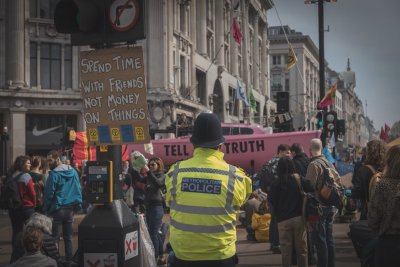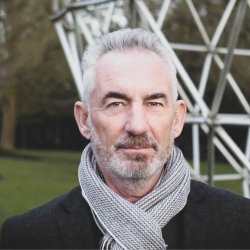New research shows the impact of hashtagging on the reach of sustainability content on Instagram
In their recent paper, researchers from the Centre for the Understanding of Sustainable Prosperity (CUSP) based in the Centre for Environment and Sustainability and in the Department of Sociology show how the reach of content which promotes more sustainable understandings of the good life may be limited by the way hashtags are used.

On average, Instagram users use 11 hashtags on their posts, but their role in the promotion of content is seldom studied beyond marketing research. Carried out by Dr Anastasia Loukianov, Prof Kate Burningham and Prof Tim Jackson, this study analysed hashtagging patterns on 793 Instagram posts tagged #goodlife downloaded in October 2018. Using network analysis, the researchers mapped out the links between hashtags and analysed which hashtags were most often used together on posts tagged #goodlife. After importing the hashtags into the open-source network analysis software Gephi, the researchers classified the hashtags thematically into semantic categories. This helped them identify the different understandings of living well that appeared on posts tagged #goodlife.
At the time of the analysis, the dominant understandings were that of the good life of the wealthy self-made entrepreneur and that of the glamorous world-traveler. What was interesting is the way in which hashtags were used on these kinds of posts, as opposed to on posts promoting more sustainable understandings of a good life, such as spending time with significant others. Posts which promote less sustainable understandings tended to repeatedly employ the same hashtags. For instance, multiple posts present the hashtags #goodlife, #entrepreneur, #motivation, #rich. Conversely, the use of hashtags on posts promoting more sustainable understandings of living well present a diffuse use of hashtags that does not follow set patterns.
Researchers have found that consistency in hashtag use is either achieved via the use of hashtag optimizing apps or via skilled and purposeful hashtag selection. Hashtag optimizing apps can generate a set of hashtags on any given topic, and ensure that hashtags are specially selected to maximise content visibility. These apps rely on the Instagram Application Programming Interface (API) to function, which means that the sets of hashtags that they propose are shaped by the interests embedded in the platform’s algorithm. As Instagram earns revenue through maximizing the time users spend on the platform and their opportunities for viewing sponsored content, hashtags deemed optimal will be shaped by these priorities. Alternatively, skilled and purposeful hashtag selection tends to be associated with influencers, who generally earn their living from the production of content. In practice, this means that more of the highly visible content on Instagram tends to be imbued with a commercial flavour.
Beyond the dominance of commercially driven understandings, the pre-requisites needed to efficiently use hashtags on Instagram mean that not all demographic groups can participate equally. Research has shown previously that time-rich and financially secure demographics are more likely to have the opportunities to acquire the skills to produce highly visible content. As CUSP researcher Marit Hammond explains, these inequalities themselves undermine our ability to create understandings which support fairer and more sustainable ways of living by limiting the scope for democratic discussions. While online spaces have enormous potential for supporting the participation of large numbers of people into the creation of more sustainable understandings of living well, it is unlikely to happen without rethinking the business logics of platforms such as Instagram.


